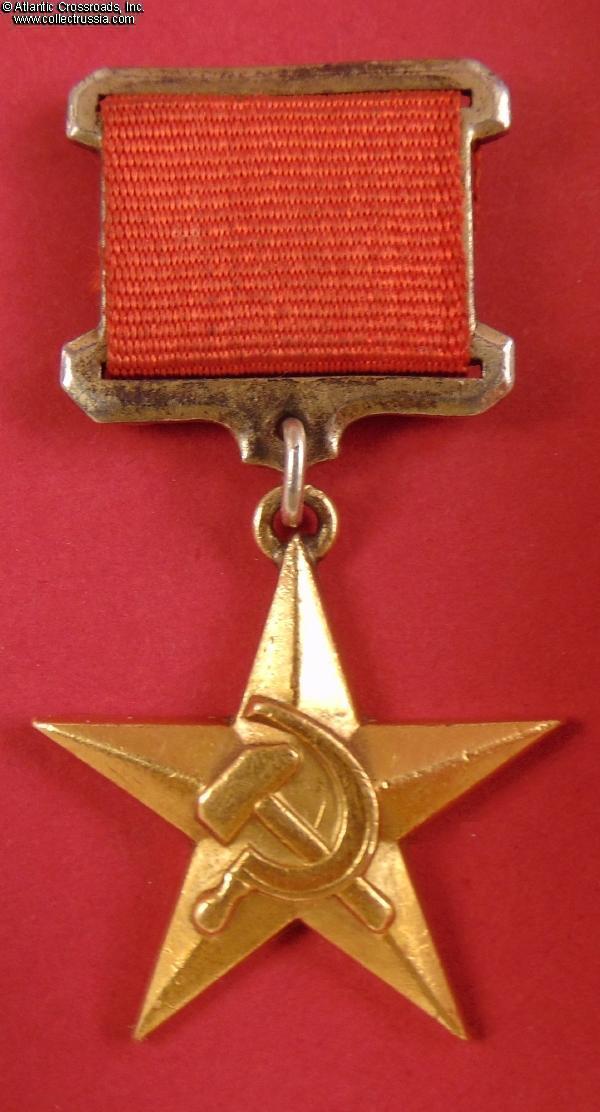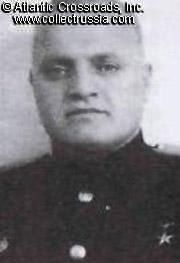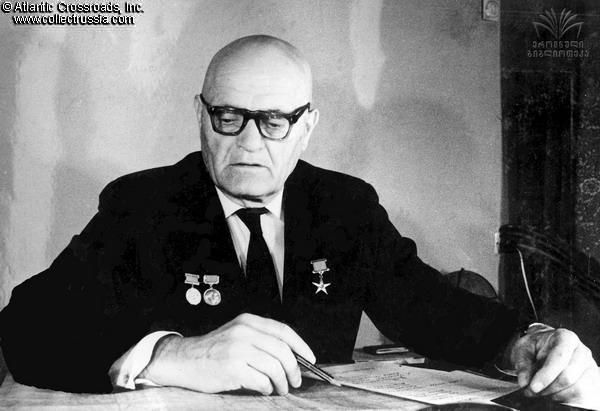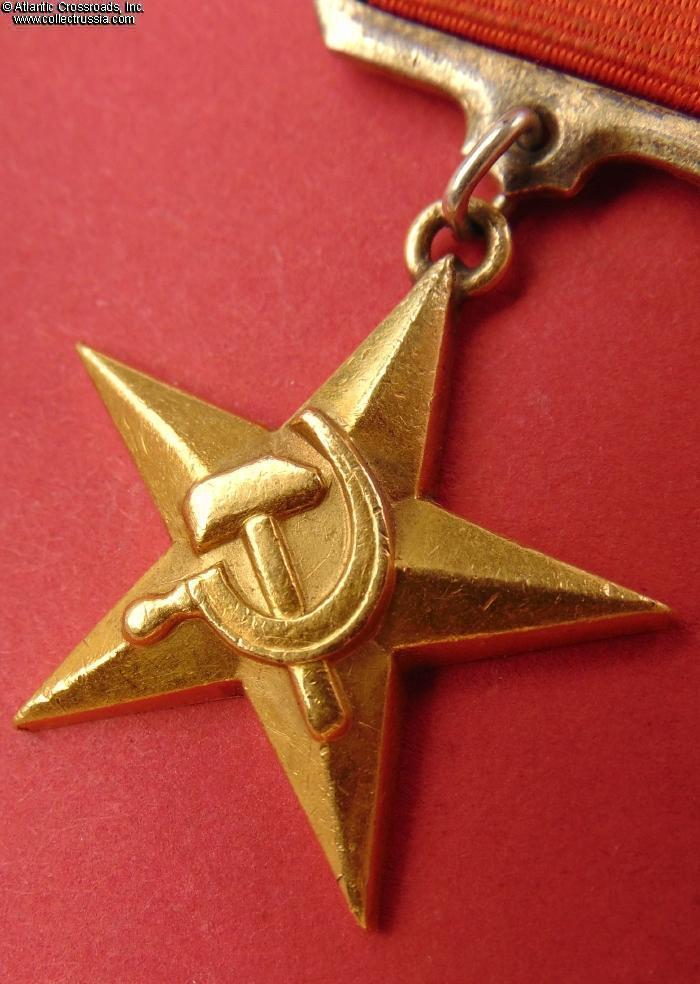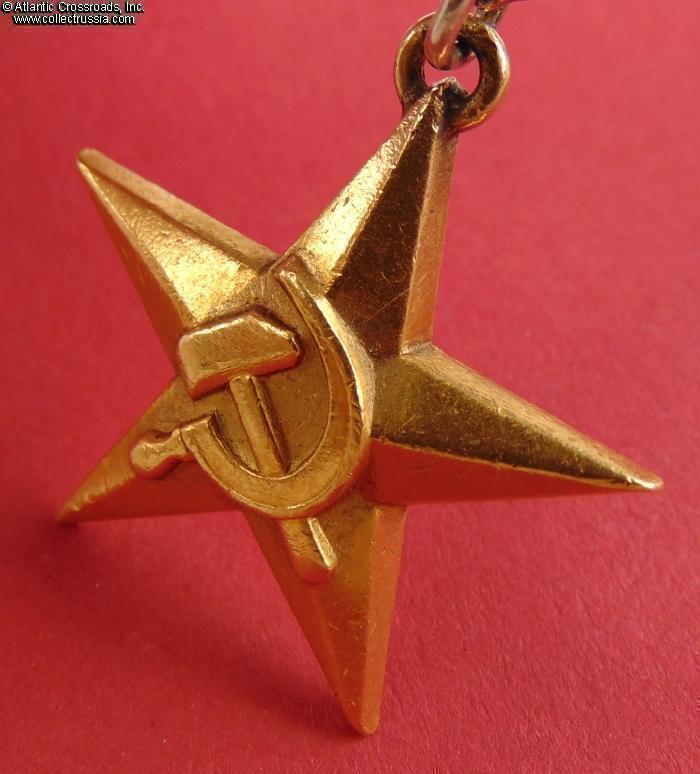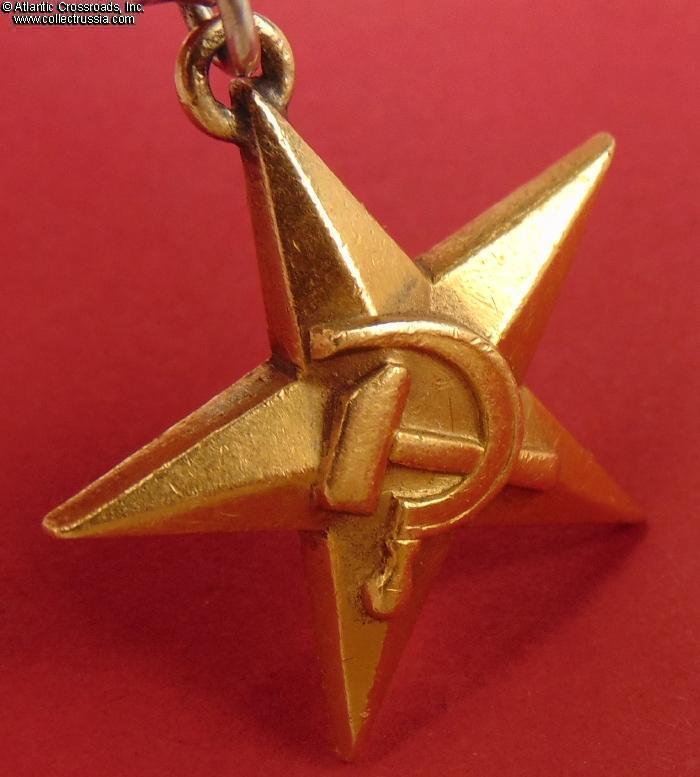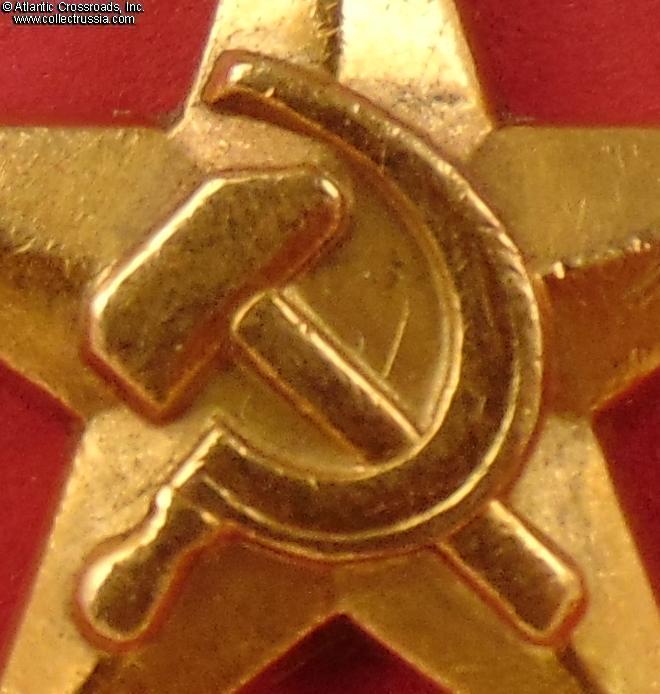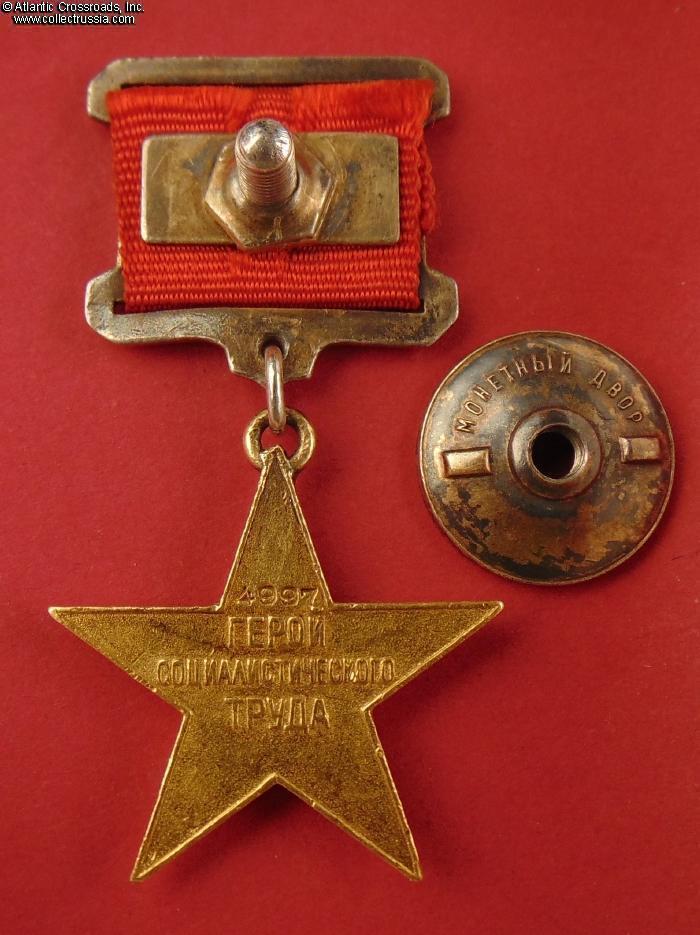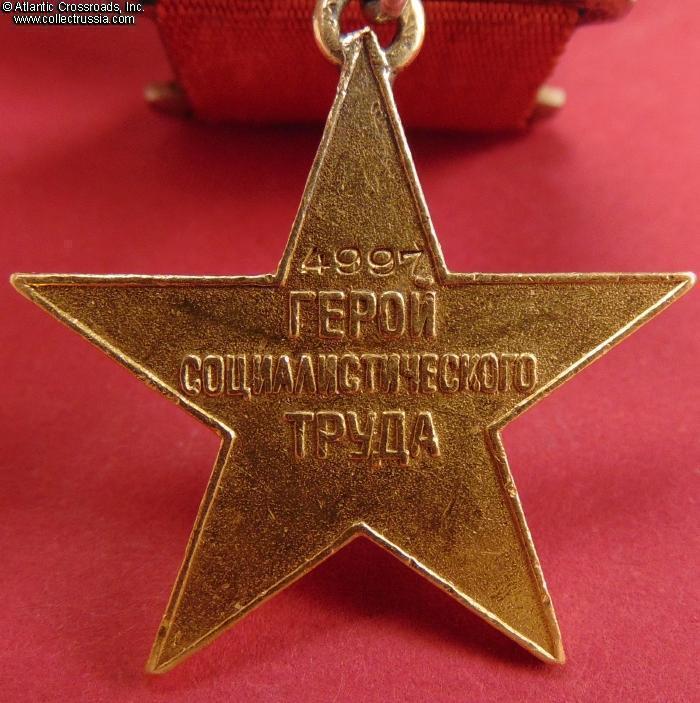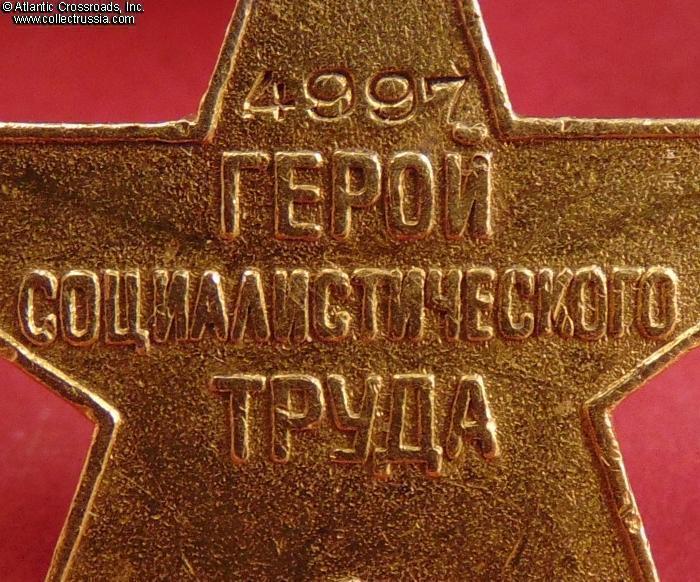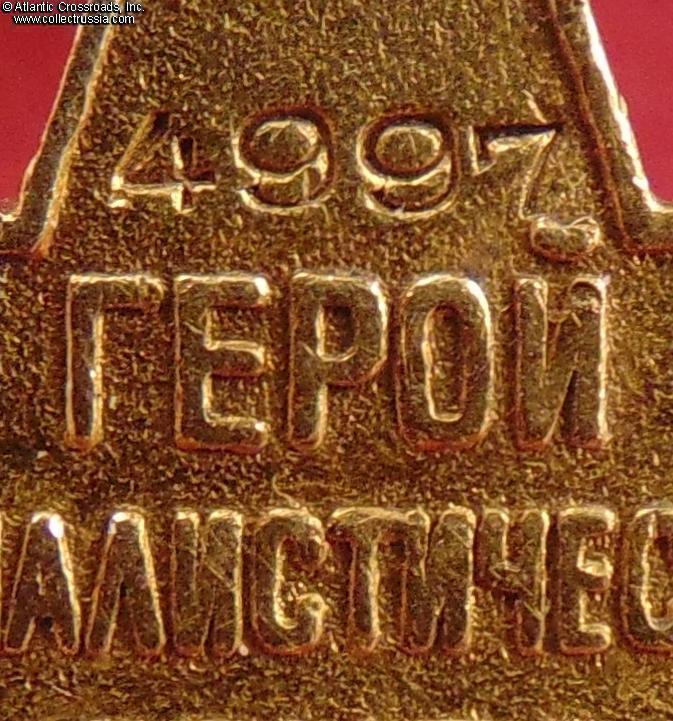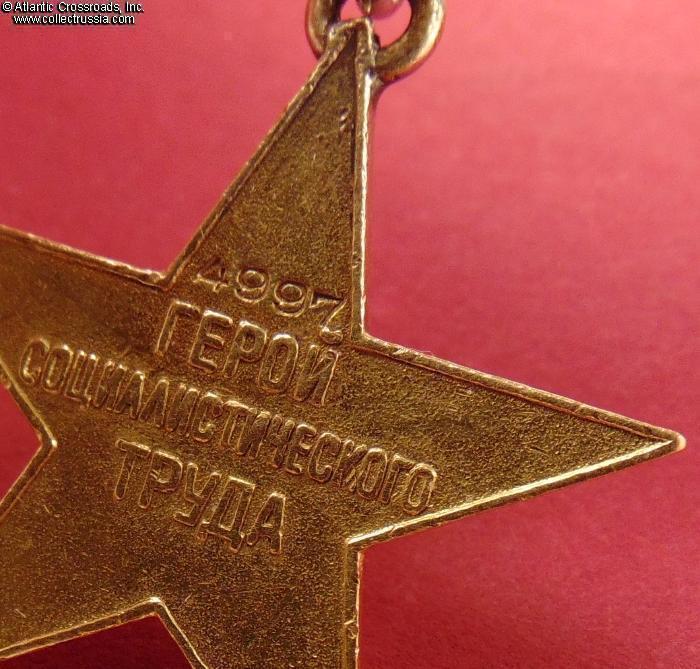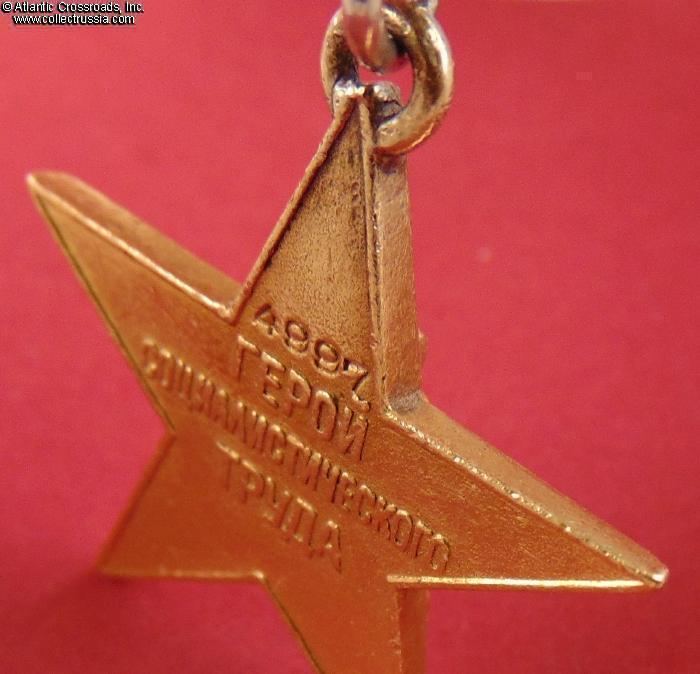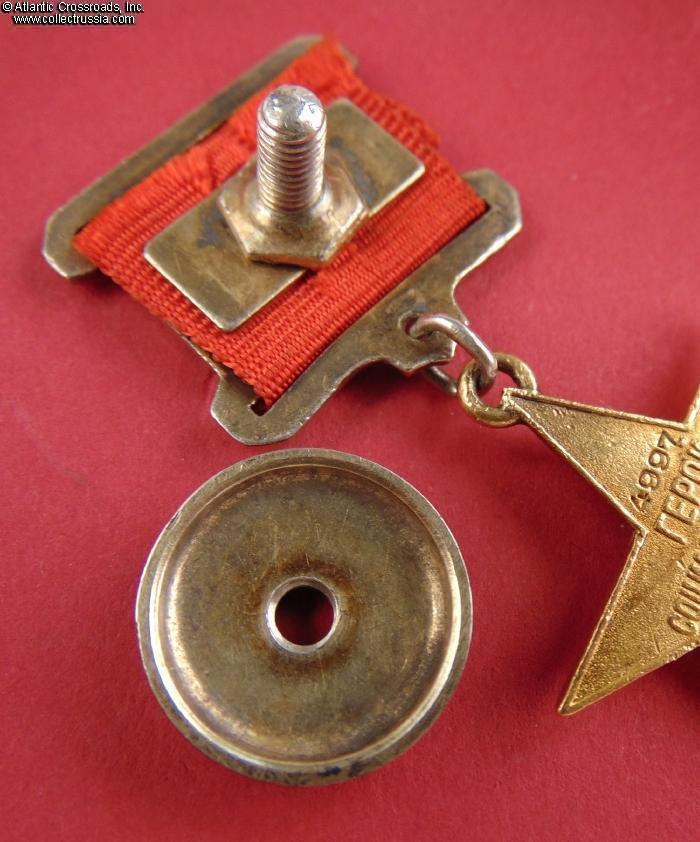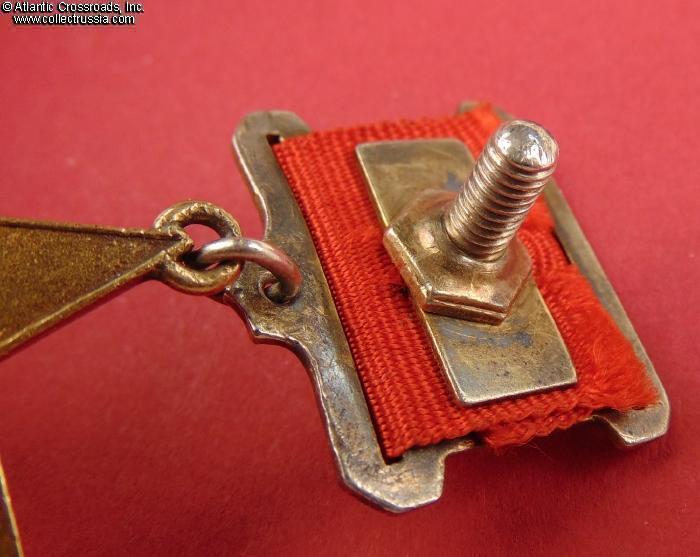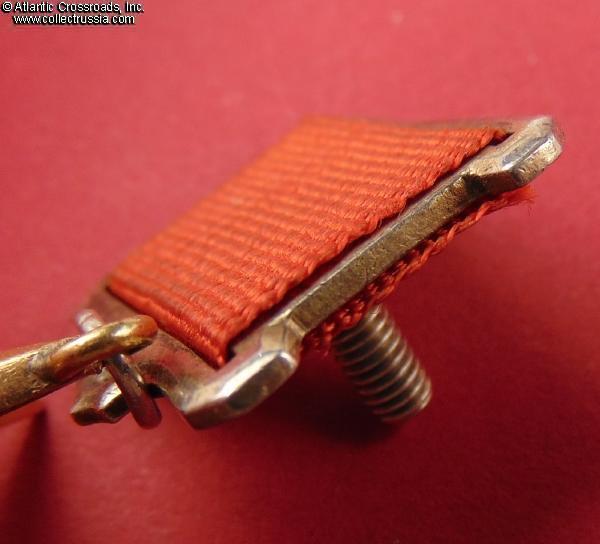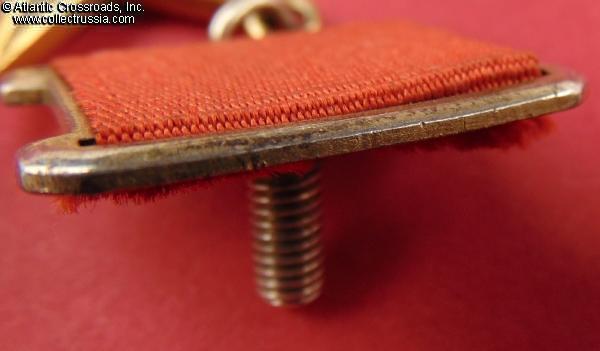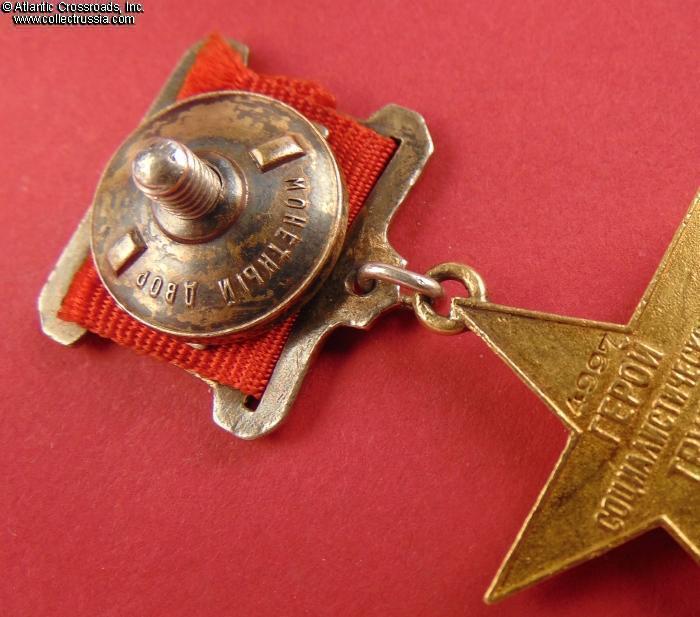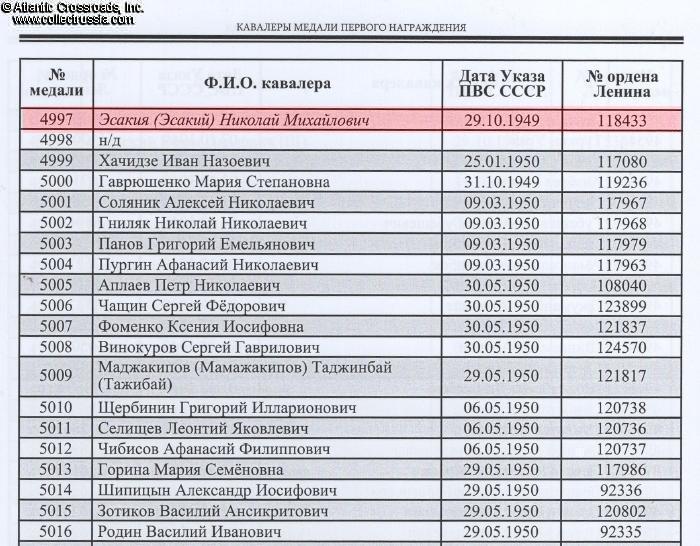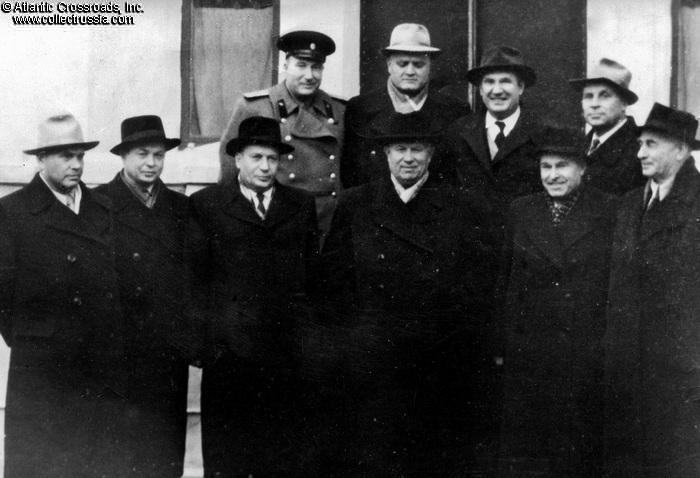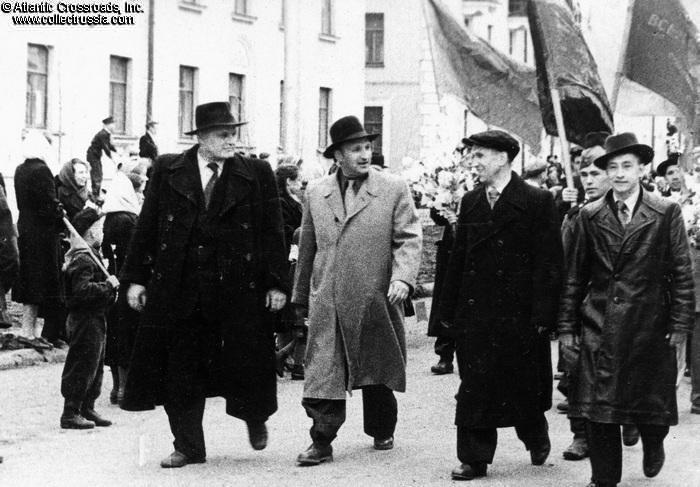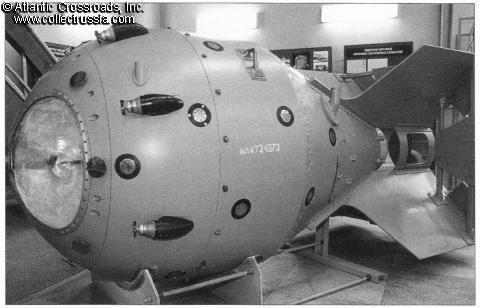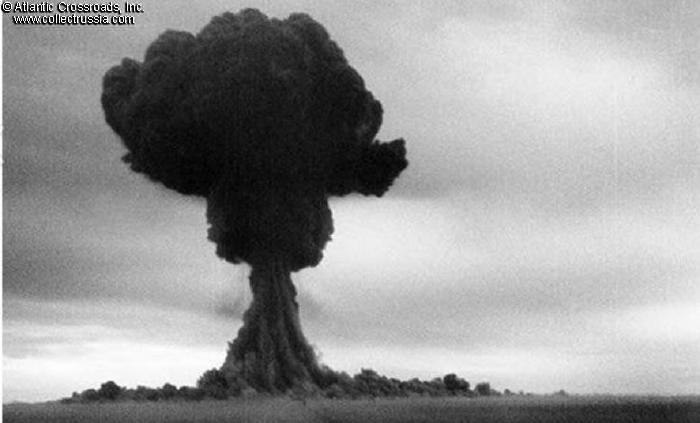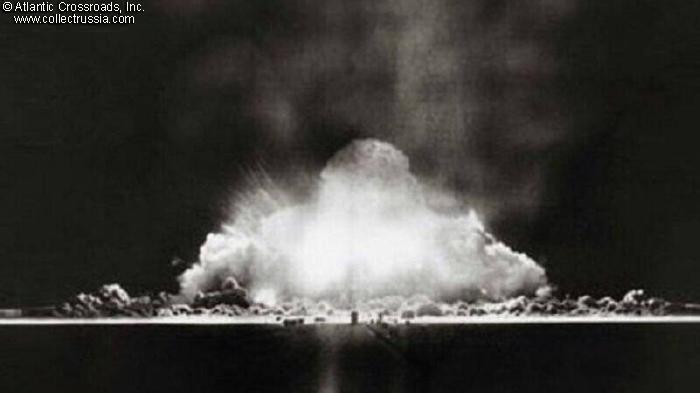Gold "Hammer and Sickle" Medal, Type 2 Variation 2, "Thick" Sub-Variation, #4997, awarded on 29 October 1949 to Nikolay Esakiya (Николай Михайлович Эсакия), Deputy Director of the German-Soviet Joint Enterprise Vismut ("Bismuth") that had procured uranium for the first Soviet nuclear bomb.
The star medallion is in solid 23 K gold; the suspension device is in gilded silver. The serial number is stamped in small numerals on the upper arm, a distinguishing feature of the Variation 2. This piece is a scarce thicker and smaller sub-variation of the Variation 2: the star is 4.3 mm thick including the hammer and sickle, averaging 2.1 mm in thickness at the tips of the arms. It is 32.0 mm in height including the eyelet; the width is 30.0 mm measured between the points of the horizontal / upper arms (slightly less than on all the later versions of the Hammer and Sickle Medal). The golden medallion weighs 16.3 g not including the suspension and connecting link; overall weight with suspension and screw plate is 29.6 g.
Very fine to excellent condition. There are a few very minor dings to the ridges of the star, none of them very noticeable or detractive, and some tiny contact marks to the facets but no significant scratches or nicks. The ridges of the star remain nice and crisp, and the points are free of bumps. The reverse likewise has only some tiny contact marks, no significant wear; the raised lettering and stippling on the background are beautifully defined.
The suspension device is original and complete, including the rectangular back plate, hexagon nut, and mint-marked screw plate. Although partly obscured by the attractive silver patina, some of the original gold plating is still clearly visible on all parts of the suspension. The screw post is approx. 10 mm long measured from the rectangular screw plate, and has not been reduced. The nicely preserved, clean ribbon is old, likely of the period. The silver connecting link appears to be original as well; its ends are still joined with solder in a characteristic seamless manner of the Soviet mint manufacture. Overall, this is a very well-preserved example of the Hammer and Sickle Medal - especially considering that it is such an early post-war issue.
Nikolay Esakiya, the recipient of the award, was born in November 1906 in the city of Poti, Georgia, then a part of the Russian Empire. His father Mikhail Vissarionovich Esakiya was reportedly an anti-government activist and not surprisingly, Nikolay joined the Communist Party, then called VKP(b), at a young age. In 1931, he graduated from the Polytechnical College of the Tbilisi State University and during the same year, began a career as a mining engineer in his native Georgia. Starting from 1933, Esakiya took part in the first and later, second phase of the construction of the Moscow Subway and by the end of the decade was put in charge of building some of its stations. (Created deep underground in large part by slave prison labor and at enormous cost, the Moscow Metro, aka Kaganovich Subway, was an architectural marvel for its day. First and foremost, it served the purpose of being an impregnable bomb shelter for the Soviet government in case of war, with the secondary role of being a showcase of achievements of Socialism. Of course, it also provided a desperately needed transportation system to relieve massive traffic congestion: the population of the city was rapidly ballooning at the time, as the capital attracted people from far reaches of the Soviet Union in search of opportunities lacking elsewhere).
As Moscow came under threat during the first months of the Patriotic War in 1941, Esakiya was employed on the top-priority project in the city of Kuibyshev, building a secret underground bunker for Stalin and Soviet general staff (little advertised fact is that Stalin and Soviet government relocated to the safety of Kuibyshev far east of Moscow on the Volga River and spent a significant part of the war there, not in the besieged Soviet capital.) In 1943, Esakiya was promoted to Deputy Chief of the Glavtonnelstroy (Main Tunnel Construction Directorate) and in this capacity, managed the construction of the exceptionally complex network of tunnels and railways connecting the cities of Sukhumi and Gagra in the mountains of Caucasus; this transportation link would play a significant role in the liberation of the region from the Germans. He also supervised the construction of several strategically important tunnels for the Black Sea Railroad. Simultaneously, he continued to work on building the Moscow Subway, with its third stage completed in 1944 thanks to a massive workforce of German prisoners of war.
Starting from 1946, Esakiya managed some of the most important parts of the Soviet nuclear bomb project. Until 1950, he served as the deputy director and chief of mining works of the joint Soviet-German enterprise Vismut ("Bismuth") which operated in the Soviet-occupied part of Germany. At the time, Vismut was the ONLY source of Uranium ore readily available to the Soviets, as mining and refining facilities at the other recently discovered Uranium deposits were either only starting being built or in the design stage. The key importance of this source and Esakiya's work is underscored by the fact that by then, the Soviets already had a full design of nuclear bombs at their disposal, the American Manhattan Project being riddled with NKVD spies (the most infamous were Julius and Ethel Rosenberg executed in 1953 for espionage, but there were many others.) The ready blueprints, home-grown and captive German scientists, and vast industrial facilities would be for nothing however without the fissile materials, and the only natural source of that was Uranium; the latter was also a prerequisite for a "breeder" nuclear reactor that could provide Plutonium, an alternative ingredient for the A-bomb. Indeed, the natural Uranium procured by the Esakiya's enterprise was used to produce both the spherical Uranium wall and fissile Plutonium core for the first Soviet nuclear weapon . Codenamed RDS-1, the bomb was successfully tested on 29 August 1949 at the Semipalatinsk proving ground to the great shock and surprise of the Western World. The role Esakiya played in this outcome cannot be overestimated.
On 29 October of that year, Esakiya along with a number of other top contributors to the nuclear project was made a Hero of Socialist Labor by a special decree of the Supreme Soviet of the USSR - which of course did not disclose the true nature of the achievements. In 1951, obviously in recognition of his expertise as a mineral mining manager and engineer, Esakiya was appointed Deputy Chief of the Directorate of Metallurgy Mining Facilities of the MVD, a part of the Soviet GULAG system, and the Chief of the directorate's Mining Operations Department. In 1953, he was promoted to Roads and Construction General, 2nd Class, a Stalin-era civil rank equivalent to Lieutenant General in the military.
The pinnacle of Esakiya's career was the construction of the vast Mining and Chemical Complex in the secret city Krasnoyarsk-26 (now Zheleznogorsk) in Siberia. A network of tunnels bored deep into the mountains under Esakiya's supervision hid huge industrial facilities which included a number of underground factories and a nuclear reactor, the latter becoming fully operational in 1956. The works involved tens of thousands of prison laborers removing 15 million cubic meters of rock and drilling to the depth of over 200 meters, all to shield the production complex from a potential nuclear attack in case of war with the US.
In July 1960, with his work in Zheleznogorsk complete, I Esakiya was transferred to Moscow and given the post of Deputy Chief of the Main Tunnel Building Directorate of the Transportation Construction Ministry of the USSR. Ten years later, he was put in charge of the construction of the highly important Inguri Hydroelectric Station in Georgian SSR and starting from 1973, worked as chief technology consultant at the construction of the subway in Tbilisi, the capital of Soviet Georgia. After his retirement, he lived in Tbilisi where he passed away in April 1987 at the age of 80.
Over the course of his long and fruitful career, Esakiya was awarded with many state decorations and titles, including three Orders of Lenin, Order of the Patriotic War 1st cl., Orders of the Red Banner of Labor and Badge of Honor, and a number of medals. He was given the Stalin and Lenin Prizes and received the titles of Honored Construction Worker of RSFSR and Honored Engineer of Georgian SSR. The Gold "Hammer and Sickle" Medal for the nuclear project however remained his highest and most prestigious award. Important decorations such as this one to high-profile individuals - and especially for some of the most pivotal events of the Cold War - very rarely become available to medal collectors.
Ample information about Nikolay Esakiya can be found in numerous Russian-language Internet sources such as https://warheroes.ru.
Item# 46184
$4,200.00 Add to cart
